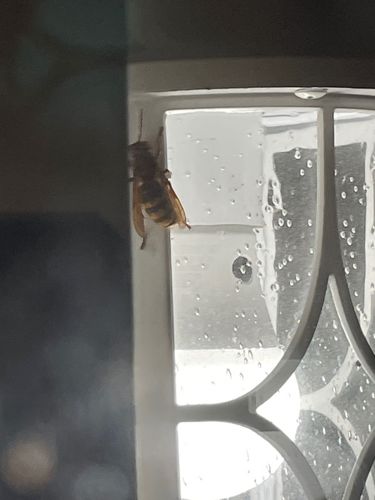European Hornet
Scientific Name: Vespa crabro
Order & Family: Hymenoptera, Vespidae
Size: Workers: '18-25 mm' ('0.7-1.0 inches'); Queens: '25-35 mm' ('1.0-1.4 inches')

Natural Habitat
Woodlands, suburban areas, often builds nests in hollow trees, attics, or wall voids.
Diet & Feeding
Mainly hunts large insects like grasshoppers, flies, and other wasps to feed its larvae. Adults also feed on tree sap, ripe fruit, and nectar.
Behavior Patterns
Social insects forming colonies that can number several hundred individuals. They are generally less aggressive than yellowjackets unless their nest is disturbed. They are also attracted to lights at night.
Risks & Benefits
Risks: Can deliver a painful sting, and multiple stings can be dangerous, especially to allergic individuals. They may damage trees by girdling branches to get sap. Benefits: They are natural predators of many garden pests, helping to control insect populations.
Identified on: 9/22/2025